Ever wanted to try your hand at vinification (winemaking)? Not sure where to start? Think it’s too expensive, time-consuming, or complicated?
Well, I’ve got news for you. It can be expensive, time-consuming, and complicated — but, it doesn’t have to be. This article focuses on how to make simple, affordable, muscadine wine in just a few short steps.

This muscadine wine recipe is easy to follow. The only catch? You have to wait a couple of months for it to ferment, and be ready to enjoy. If you time this cleverly, you can have homemade wine ready when you will need it most. For example, when I made muscadine wine, I was in college, so I timed it to be ready right around finals. Trust me, it paid off! And the leftover wine I had from the recipe, I used as Christmas gifts for my family.
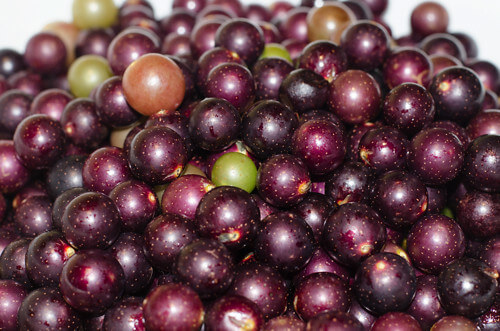
Muscadine Facts
Vitis rotundifolia is a grape species that is native to the Southeastern and South Central United States. They’ve been cultivated since the 18th century but still grow wild on their own.
Identifying Muscadine
The muscadine itself has a tough, leathery skin that is also edible. Muscadine fruit color can range from purple to green. Generally, they are a bit smaller than a ping pong ball when fully ripe, and are filled with seeds that are also edible. Muscadine leaves have a very characteristic shape which in general, is triangular or heart-shaped with jagged, toothed edges. The leaves are between 2 and 5 inches in width, satin and glossy, and range from vibrant to dark green. This is a vine species and is most often found growing on trees or fences.
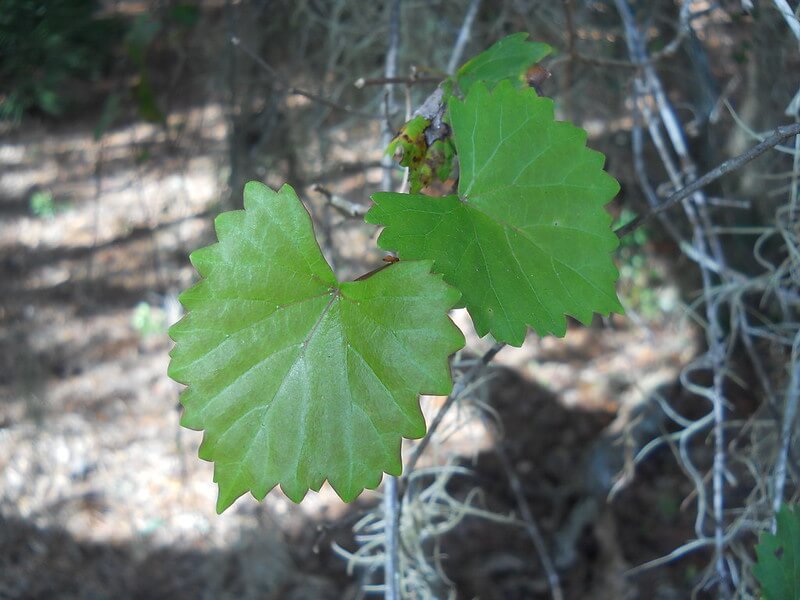
Muscadine Wine Recipe
1. A gallon of muscadines: any variety, or multiples (green or red). It can be fun to make multiple batches using different varieties so you can taste test the difference in flavor. I made my wine using red muscadines while a friend made his using green. The difference was evident in the color of the wine and the taste.
Any gallon container or bag will do as a measure.
It is recommended to use freshly picked muscadines, which generally ripen early August through September, but it depends on your region, and if you have them growing locally.
2. A package of yeast (not rapid rise)
3. 3 gallons of distilled water: it’s important that it is distilled water, as the distillation process removes everything from the water including minerals. The yeast used in this process should naturally die in the fermentation process (and unwanted minerals will keep the yeast/wine bubbling).
4. 8 pounds of organic sugar
5. A cheesecloth or mesh bag equivalent
6. A 5-gallon bucket or alternative containers: to store the muscadine wine after processing is complete, and to use as a container for the wine after it has fermented
7. A dark, cool room to store the wine while it is fermenting
After you have gathered all the ingredients and supplies you need for this recipe, here is the process.
Wine Making Process
Start by crushing the muscadines until the skins burst and the juice comes out. I did this in a plastic bag and found the process pretty fun. However, you could just as easily do a mortar and pestle setup, and crush them in an open container, or stomp on them with your bare feet in a bucket — but make sure the juice is contained!
Next, combine the muscadines (skin and all) in the 5-gallon bucket with the distilled water, yeast, and sugar. Stir the mixture well to combine all the ingredients and help the sugar dissolve. Cover the bucket and let this sit for the following 24 hours.
After 24 hours, uncover the bucket, stir the mixture again, and then strain it through a cheesecloth or mesh bag in a second 5-gallon bucket, or alternate container.
Close the container, placing a cheesecloth or a mesh bag in between the lid and the rim. As the mixture ferments, it will bubble and foam like carbonated water, and having the cheesecloth/mesh bag in place will allow the excess air to escape (otherwise it will explode and you’ll be left with a sticky mess).
Make sure you store the containers in a cool, dark area where they can remain undisturbed for the following months.
You’ll know the wine is ready when it has finished bubbling, but also when it tastes like wine. It can take upward of 9 weeks. After it has finished fermenting, you can store it in wine bottles, mason jars, or whatever you like. It will keep for years.
You may see settlement at the bottom of your containers — this is normal. It is simply small bits and pieces of the muscadine that strained through the cheesecloth. Some people double or triple the cheesecloth or mesh bag when straining, or double/triple strain their wine.
This muscadine wine recipe is great to enjoy at home with friends or to give away as a sweet, thoughtful gift.
Related Post: How To Make Carrot Wine


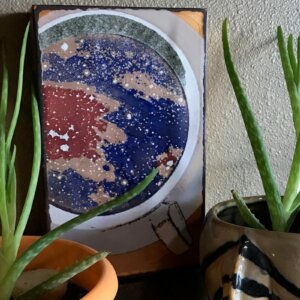
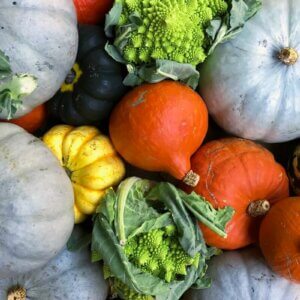
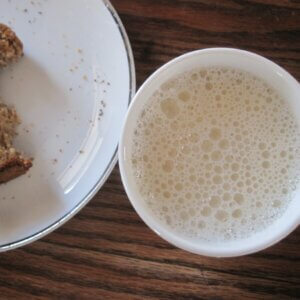


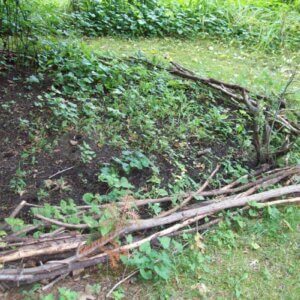

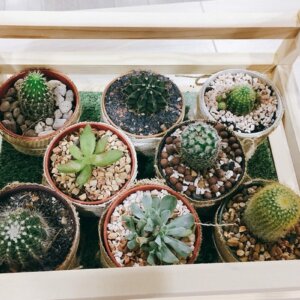




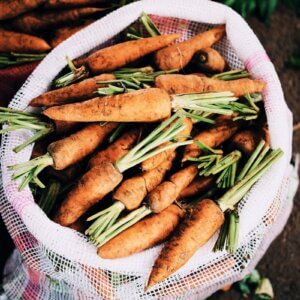

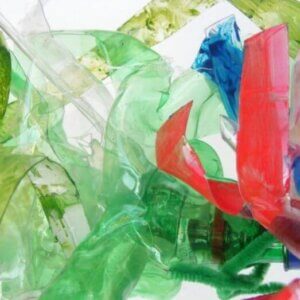


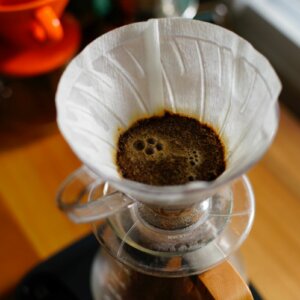



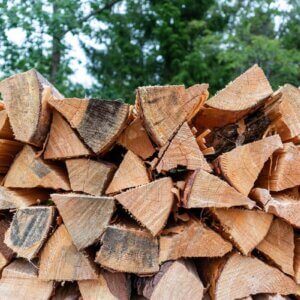
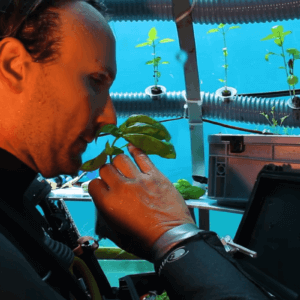




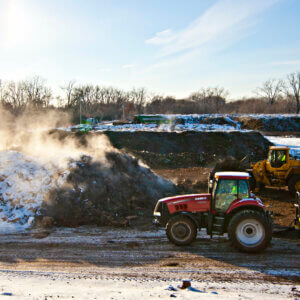




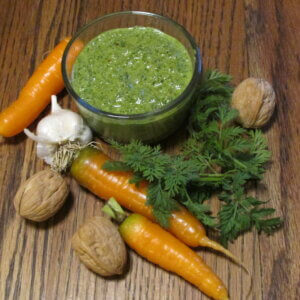




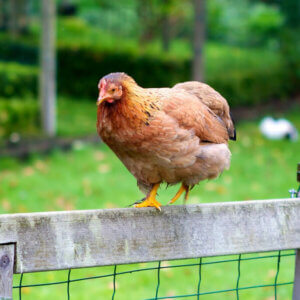

After straining the grapes and placing back in the container with the mesh/cheesecloth between the lid and the container do you leave the lid loose, or close tight?
Hi there, you can close the lod tight as the cheese cloth allows air to escape still